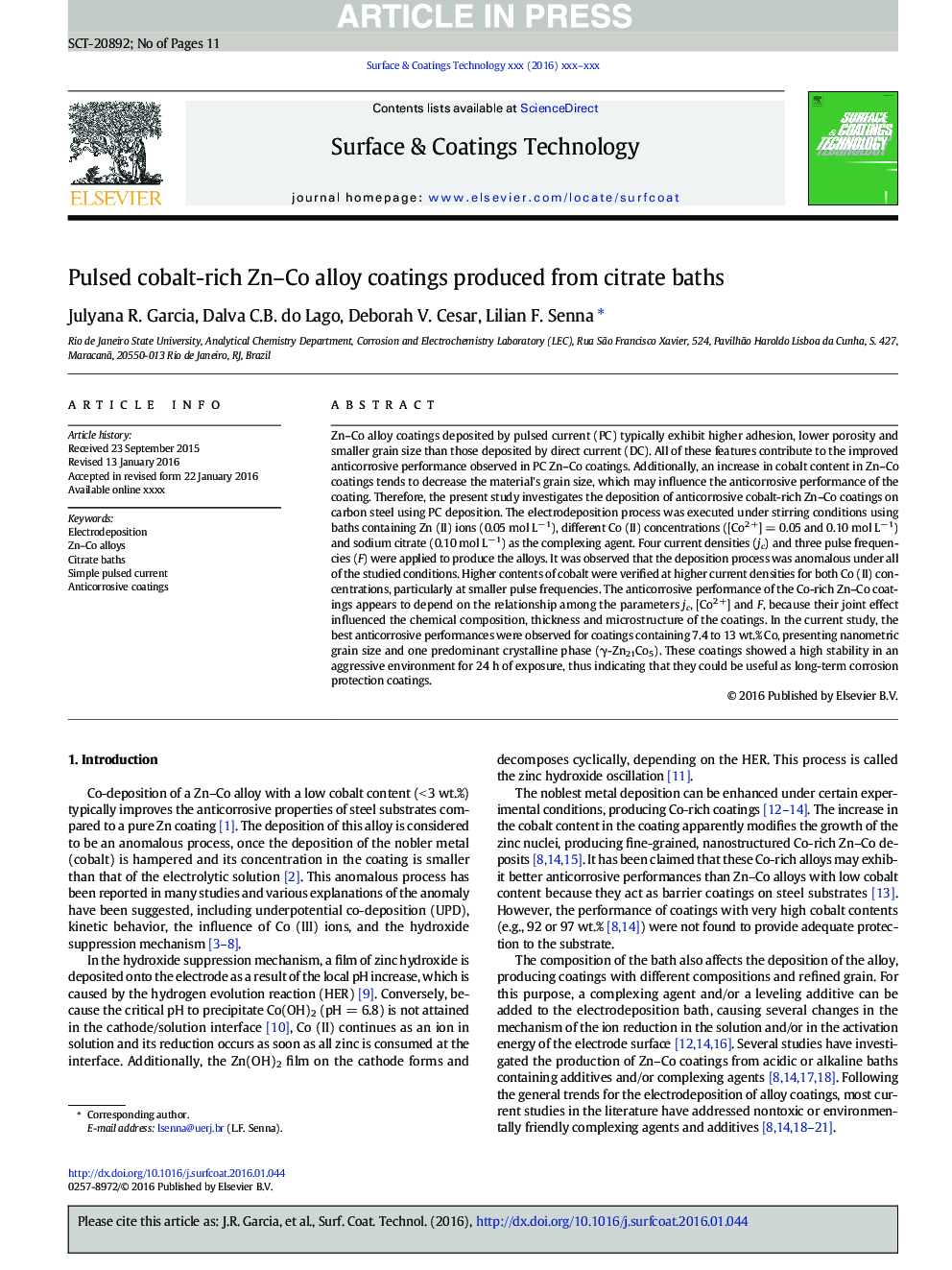| Article ID | Journal | Published Year | Pages | File Type |
|---|---|---|---|---|
| 5465424 | Surface and Coatings Technology | 2016 | 11 Pages |
Abstract
Zn-Co alloy coatings deposited by pulsed current (PC) typically exhibit higher adhesion, lower porosity and smaller grain size than those deposited by direct current (DC). All of these features contribute to the improved anticorrosive performance observed in PC Zn-Co coatings. Additionally, an increase in cobalt content in Zn-Co coatings tends to decrease the material's grain size, which may influence the anticorrosive performance of the coating. Therefore, the present study investigates the deposition of anticorrosive cobalt-rich Zn-Co coatings on carbon steel using PC deposition. The electrodeposition process was executed under stirring conditions using baths containing Zn (II) ions (0.05 mol Lâ 1), different Co (II) concentrations ([Co2 +] = 0.05 and 0.10 mol Lâ 1) and sodium citrate (0.10 mol Lâ 1) as the complexing agent. Four current densities (jc) and three pulse frequencies (F) were applied to produce the alloys. It was observed that the deposition process was anomalous under all of the studied conditions. Higher contents of cobalt were verified at higher current densities for both Co (II) concentrations, particularly at smaller pulse frequencies. The anticorrosive performance of the Co-rich Zn-Co coatings appears to depend on the relationship among the parameters jc, [Co2 +] and F, because their joint effect influenced the chemical composition, thickness and microstructure of the coatings. In the current study, the best anticorrosive performances were observed for coatings containing 7.4 to 13 wt.% Co, presenting nanometric grain size and one predominant crystalline phase (γ-Zn21Co5). These coatings showed a high stability in an aggressive environment for 24 h of exposure, thus indicating that they could be useful as long-term corrosion protection coatings.
Related Topics
Physical Sciences and Engineering
Materials Science
Nanotechnology
Authors
Julyana R. Garcia, Dalva C.B. do Lago, Deborah V. Cesar, Lilian F. Senna,
